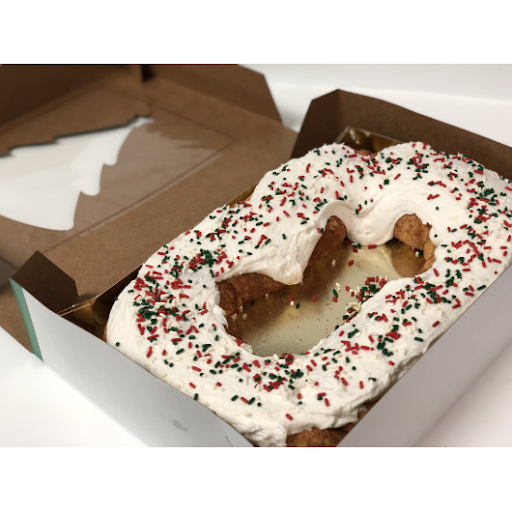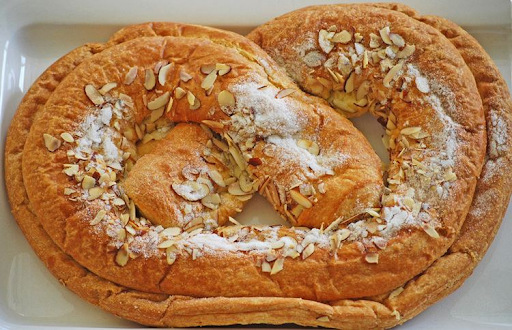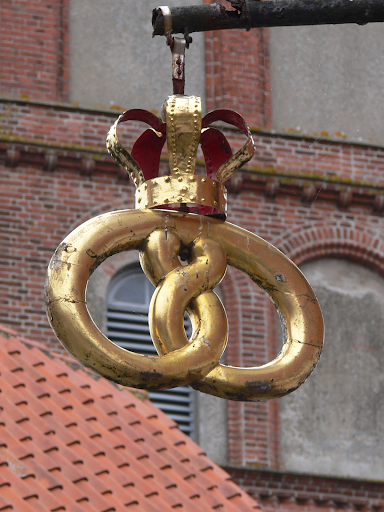Include a Topper!
Happy Birthday Banner
$9.00
Add Ons
Your cart is currently empty!
Since 1949 celebrating 75 years. Order online or call us at 1 800 GAMBINO (426-2466)


In a world of elaborately decorated buttercream and fondant cakes, the Kringle is easy to overlook. At first glance, it appears to be nothing more than an oversized iced Danish or maybe a flattened King Cake. But look closer and you’ll notice dozens of flaky, lighter than air layers under that smear of icing. Hiding inside the cake will be a luscious filling of anything from fruit to almonds to pralines. While the pastry by itself is enough to be admired, the history behind this flaky wonder is even more fascinating and layered than the dough the treats are made from.
It’s not enough to say the Kringle Cake originated in Denmark. While technically correct, there’s much more behind the development of the cake than that. To fully appreciate the history of the Kringle, we have to follow a long path back to examine the Middle East and Europe in the 11th, 13th, and 16th centuries as well as Scandinavia in the 1200s.
While there is debate about who exactly invented puff pastry and when, what is known is that 11th-century Turkish texts record mention of a special “pleated and folded bread” which would become Filo (or Phyllo) by the 13th century founding of the Ottoman Empire. When the Ottomans began spreading from the Middle East into Europe and Africa, the migrating people took their culinary knowledge with them.
Meanwhile, Austria, a formidable enemy of the Ottoman Empire, was adapting the newly introduced filo dough into their own version of a multi-layered bread. Traditional filo was made by rolling out hundreds of paper-thin sheets of dough which would be brushed with oil and then stacked to create a shatteringly flaky treat when baked. The Austrians replaced the olive oil with butter since butter was much more abundant in Austria at that time. Instead of rolling out individual pieces of dough, they created a process called lamination where a sheet of butter would be wrapped in dough and then folded multiple times to create dozens or hundreds of flaky layers.

While Austria and the Ottomans battled over land and culture, Roman Catholic monks made their way into Scandinavia sometime in the 13th century. These monks brought their own culinary traditions with them including the famously twisted treat, the pretzel. Pretzels were supposedly created in the 7th century by a monk who wanted to reward good children for saying their prayers. The crossed folds of a pretzel represent the prayer position of Dark and Middle Age Christians who prayed by crossing their arms over their chest instead of folding hands as we do today. Over time, the Nordic pretzel, or kringle, became synonymous with prosperity and good luck.
Today we’re familiar with the salty chewy bread form of pretzels made popular in Germany. But the term pretzel originally referred to many different types of treats with the crossed arm shape. The Nordic form of pretzels were typically filled with ground almonds and raisins and were especially well known in Denmark. Then, in the 1850s, the Danish Bakery Guild went on strike and desperate bakery owners brought workers from Austria to fill in for the striking Danes. These Austrian bakers came with the knowledge of puff pastry from their earlier encounters with the Ottomans and used that knowledge to help create a new form of pastries now known as Danishes.

Beginning in the 1880s, large groups of Danish people began migrating to America. 10% of all those Danish immigrants made Racine, Wisconsin home. Not wanting to let go of their culture and traditions, many opened their own bakeries and brought their pastries to the greater American public. The combination of flaky puff pastry and fillings of preserved fruit and nuts were a winner. Due to changing American tastes, cheeses and fresh fruit became popular fillings and the ever-present Kringle Cake was adapted into an oval which would be covered in sweet icing.
No one is sure how the Kringle came to New Orleans, but Scandinavian and German immigrants are the most likely point of entry. Here in the city, the cakes began appearing in bakery windows more and more around Christmas time and are slowly being associated with Kris Kringle and the holidays. That’s true here at Gambino’s where the Kringle Cake comes with the option of two different fillings, cream cheese or praline, and lets you decorate them yourself. So why not order a Kringle or two for the family and take part in a tradition going back more than 800 years.